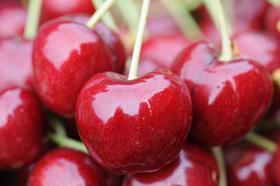
The Northwest cherry industry appears to be on the verge of record production as the 2017 season kicks off.
While there are a few factors that need to fall into place for this to occur, two key pieces to this puzzle are already nailed down: a cold winter and greatly expanded acreage.
Last winter was one of the coldest the US Pacific Northwest has experienced in decades: freezing to the point that growers were concerned about frost damage to their trees.
This can be a good thing, however, as all varieties of stonefruit require a certain amount of pre-season chilling hours to systemically shut down in order to set a crop the following summer.
As the 2017 season comes into view, cherry groves across the Northwest appear to be loaded with fruit.
Northwest cherry growers have also been on a planting binge since the turn of the century.
According to data provided by the Northwest Cherry Growers (NWCG) industry association, between 2001 and 2017, acreage increased by 72 per cent to more than 22,250ha. As a consequence, the region’s cherry production has the potential – given favourable growing conditions – to exceed 25m shipped cartons per season.
The weather has been less than cooperative the last several seasons, postponing the inevitable avalanche of fruit.
Barring an overly hot summer or ill-timed thunderstorms, it appears that everything is in place for the mega cherry crop the Northwest industry has been anticipating for many years.
The brisk winter weather continued on through much of the spring across the Northwest, pushing the start of the 2017 cherry harvest well into June.
Washington State is responsible for approximately 85 per cent of the Northwest’s cherry production, and fruit maturity this year appears to be nicely spread from south to north since the bloom period was not nearly as compressed as last season. This fact, and the relatively late seasonal start, are expected to allow shipments to run strong through most of August, lasting into the first week of September.
The NWCG released its initial production estimate for the season in mid-May, forecasting a crop of 22.7m cartons (9.1kg). If accurate, that would make 2017 the second-highest year in volume, exceeding last year’s 20.97m cartons. For reasons cited earlier, many industry observers feel that this estimate is on the conservative side.
“Talk around the industry is that volume will be anywhere from 15 to 20 per cent higher than last year,” said Marc Pflugrath of CMI Orchards. “If you do the math, that puts us up to the 24-25m (carton) range.”
“It’s probably closer to the 24m-carton level than what they’re estimating,” agrees Randy Eckert of Yakima Fresh. “The trees had a good winter’s rest and aren’t stressed. And last year’s crop wasn’t that huge, so fruit quality should be good.”
Steve Reinholt of Oneonta Trading travelled throughout the Washington and Oregon growing areas during May, and came away impressed with what he’d seen.
“We had some customers in town and we toured orchards from Hood River (Oregon) to north of Wenatchee (Washington),” said Reinholt. “Honestly, I was surprised to see fruit looking as large as it did. We had a good, strong bloom this spring and that would normally mean a somewhat smaller size curve. But it’s pretty far along in the growing season, and I just don’t feel a lot of those larger cherries are going to drop.”
Labour challenges
The crucial predicament confronting all of western US agriculture these days is the shrinking pool of field labour.
The Northwest cherry industry, with its impending increase in annual production, is no exception.
While staffing pressures at the packhouse level have diminished in recent seasons due to the introduction of high-tech optical grading and sorting systems, Northwest growers are scrambling like never before to place enough people in their groves to get their fruit picked.
The majority of the labour utilised by the US produce industry continues to hail from Mexico. Due to an improved Mexican economy plus increased security at US borders, the supply of field labour is a fraction of what it was just a few years ago. Growers across the western states are now spending millions of dollars on federal programmes to import, house and feed foreign workers.
However, the government programme, known as H-2A, has proven in past seasons to be cumbersome, with worker applications slow to be processed. Although the system appears to have been streamlined somewhat, the supply of foreign labour this year is still not nearly enough to meet industry needs.
“We’ve had all of 29 people apply (for field work) so far this season where we had something like 200 last year,” said Andy Tudor of Rainier Fruit in early May.
“The lack of field labour is definitely our biggest challenge these days,” added Eckert. “As long as the quality is there, our industry can pack and sell a cherry crop even if it hits 30m cartons. The question is: can we pick it?”
Asian markets will be wanting for supplies of cherries during June because a significant production gap seems to be developing between the end of the California season and the start of the Northwest’s.
A rainstorm that hit the Stockton-Lodi region in late May damaged the Bing crop and could keep that fruit on the domestic market.
Regardless of the weather, California production was expected to drop off drastically by 5 June, with only a smattering of fruit remaining from a few late districts.
This is an abridged version of an articleoriginallypublished in the June edition of Asiafruit magazine, out now.



